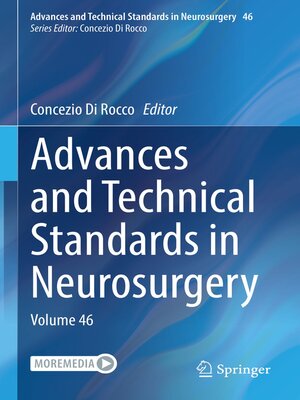Advances and Technical Standards in Neurosurgery
ebook ∣ Volume 46 · Advances and Technical Standards in Neurosurgery
By Concezio Di Rocco

Sign up to save your library
With an OverDrive account, you can save your favorite libraries for at-a-glance information about availability. Find out more about OverDrive accounts.
Find this title in Libby, the library reading app by OverDrive.



Search for a digital library with this title
Title found at these libraries:
| Loading... |
The book provides an update of several pathological conditions of the CNS that require neurosurgical treatment.
The different chapters, written by the most eminent international scientists and clinicians in the field of neuroscience, offer a critical assessment of the relevant nosographic entities that are the subject of current scientific debate.
The first chapter critically analyses the new WHO classification of brain tumours, while the second chapter is specifically devoted to intracranial tumours in the first years of life. The technical aspects of neuro-oncological surgery are addressed by two chapters dealing with the suprasellar approach to infratentorial tumours and how to decrease the risk of a specific complication of the surgical management of these tumours in the paediatric population, namely post-operative speech impairment. Hypothalamic tumours with their associated epilepsy and intracranial schwannomas complete the technical surgical section on intracranial tumours. An interesting chapter presents the latest advances in clinical prediction in neurosurgery.
Spinal problems are discussed in two chapters, the first considering evolving concepts on craniovertebral and spinal instability and the second Chiari malformations.
The management of intracranial arachnoid cysts is still a matter of controversy, as demonstrated in a specific chapter of the book. Another chapter deals with subdural haematomas in both adults and children.
Hydrocephalus is treated in two chapters devoted to two post-inflammatory or post-infectious complications leading to specific and difficult-to-treat abnormalities in the CSF circulation.The final chapter of the book illustrates the rationale behind midface advancement in craniosynostosis.
As with the previous volume in the series, the present volume represents an important contribution to the advancement of neurosurgical specialties.






